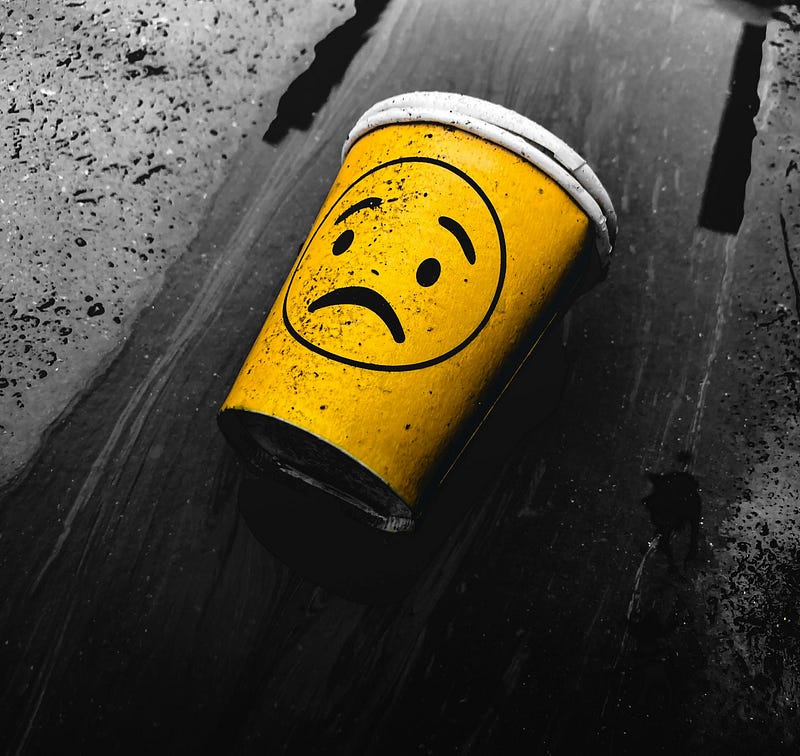Navigating the Distinct Worlds of Stress and Anxiety
Written on
Chapter 1: Understanding Stress and Anxiety
Stress and anxiety are emotional states that many individuals encounter in their everyday lives. Although these terms are often used interchangeably, they represent two distinct experiences, each with its own unique symptoms and triggers. Grasping the differences between stress and anxiety is crucial for recognizing and managing these emotions effectively.
Stress is typically a natural physical response to perceived threats or demands and can arise from a variety of external and internal factors, such as financial challenges, work-related pressure, or health concerns. In contrast, anxiety is a psychological reaction to stress, often characterized by intense worry about future events. This can manifest physically as symptoms like a racing heart, excessive sweating, and trembling.
It's not unusual for stress and anxiety to occur simultaneously, which can complicate the ability to discern one from the other. However, certain indicators can help individuals identify the emotion they are experiencing. By deepening our understanding of these differences, we can take proactive steps toward more effectively managing stress and anxiety, ultimately enhancing our overall quality of life.
Key Takeaways:
- Stress and anxiety are distinct emotional experiences with different symptoms and causes.
- Stress is a physical reaction to perceived threats, while anxiety is a psychological response to stress.
- Understanding the differences between stress and anxiety can empower individuals to manage these emotions better.

Chapter 2: Defining Stress and Anxiety
Recognizing the differences between stress and anxiety is vital as both can have significant implications for our physical and mental health. Stress is a natural reaction to perceived challenges, while anxiety is a more generalized feeling of fear or unease. Various factors, such as work pressures, financial issues, relationship challenges, or health problems, can trigger stress, while anxiety might stem from specific situations or persist as a chronic condition.
Common Symptoms and Physical Responses
Both stress and anxiety can profoundly impact emotional and physical well-being, producing a range of symptoms. In reaction to stress, the body may show physical signs like elevated heart rate, increased blood pressure, and muscle tension, alongside the release of stress hormones like cortisol and adrenaline. Similarly, anxiety can lead to symptoms such as rapid heartbeat, perspiration, and shaking, alongside feelings of tension and nervousness. In severe cases, anxiety may escalate into panic attacks, which can manifest as chest pain, shortness of breath, and a feeling of impending doom.
Short-Term vs. Long-Term Effects
While short-term stress and anxiety can sometimes be beneficial, chronic experiences of these emotions can adversely affect both physical and mental health. For instance, prolonged stress may heighten the risk of heart disease and stroke, while ongoing anxiety can contribute to depression and substance abuse. Therefore, developing healthy coping mechanisms, such as engaging in physical activity, practicing meditation, and seeking counseling, is essential. By understanding the differences between these emotions and their effects, individuals can take proactive steps toward better managing them and improving their overall well-being.
The first video titled "What's the Difference Between Stress and Anxiety?" provides an insightful overview of the fundamental differences between these two emotional experiences, helping viewers identify their own feelings and responses.
Distinguishing Between Stress and Anxiety
Stress and anxiety are often confused, yet they are not the same. Both can lead to similar physical and emotional symptoms, but key differences exist.
Identifying Triggers and Behaviors
Stress typically arises from external factors such as work issues, relationship troubles, financial pressures, or significant life changes. It is a natural reaction to perceived threats and can often be resolved by addressing the root causes. In contrast, anxiety often stems from internal factors, including negative thought patterns or chemical imbalances in the brain. While it can also be triggered by external events, the resulting anxiety may be disproportionate to the situation and can be challenging to manage.
Individuals experiencing stress may demonstrate behaviors such as procrastination, irritability, or difficulty sleeping, while those with anxiety might engage in avoidance, compulsive actions, or even panic attacks.
Physical Symptoms and Health Implications
Both stress and anxiety can lead to physical symptoms like headaches, muscle tension, and digestive issues. However, anxiety is more likely to result in symptoms such as rapid heartbeat, chest pain, and shortness of breath. Chronic stress can elevate the risk of high blood pressure, heart disease, and depression, whereas anxiety disorders can increase the likelihood of heart disease, substance abuse, and suicidal thoughts.
Approaches to Treatment and Management
Managing stress and anxiety requires tailored approaches based on their underlying causes and symptom severity. Stress can often be addressed through lifestyle adjustments, including regular exercise, relaxation techniques, and efficient time management strategies. Conversely, anxiety disorders may necessitate more intensive interventions, such as therapy or medication. Cognitive Behavioral Therapy (CBT) is a prevalent treatment method, focusing on changing negative thought patterns. Selective serotonin reuptake inhibitors (SSRIs) are also commonly used to treat anxiety disorders.
In summary, while stress and anxiety share several similarities, they are distinct experiences with varying causes, symptoms, and treatment strategies. It is crucial to seek professional assistance if chronic stress or anxiety is adversely impacting daily life.
The second video, also titled "What's the Difference Between Stress and Anxiety?" delves deeper into the nuances between these emotional states, equipping viewers with knowledge to better navigate their own experiences.